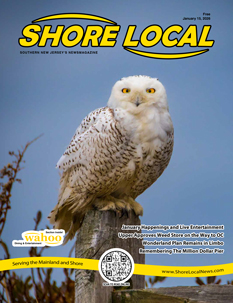Drink Up with David Setley
Cabernet Sauvignon came into existence as a result of French winemakers in Bordeaux experimenting with grapevine grafting in the 1600s. It has been proven through DNA fingerprinting techniques that the grape was created by grafting together Cabernet Franc and Sauvignon Blanc. In the ensuing centuries, the Cabernet Sauvignon grape has traveled the world, becoming one of the most recognized varietals the wine world has ever known. Fittingly for the timing of this article, Aug. 30 is International Cabernet Sauvignon Day.
Let’s begin with our great nation. Why is Cabernet Sauvignon so popular, especially here in the United States? For starters, Americans have a slight preference for red wine over white wine. In a survey published earlier this year, 49% of American wine drinkers preferred red wine, while 36% reported they preferred white wine. Among all wine drinkers in our country, Cabernet Sauvignon was the top pick followed by Pinot Noir, Chardonnay, and Zinfandel. Cabernet Sauvignon has a flavor and texture that is well-suited to the American palate. Cab wine is dry and full-bodied, with smooth, rich tannins, mild acidity, and the robust flavor of dark fruit and notes of wood. This profile pairs well with the foods many Americans favor, including steak, barbecued meat, hamburgers, lamb, pizza, almost all Italian food with red sauce, meatloaf, beef stews, Yankee Pot Roast, cheesesteak sandwiches, and so on. It is extremely food-friendly with the traditional American diet.
California Cabs are arguably the most famous of the American options. After all, the Mediterranean climate of the Golden State is great for growing wine grapes. However, Sonoma and Paso Robles are more recognized for Cabernet Sauvignon than Napa. The climate in these regions provides a long growing season, warm days, and cooler nights. The soil is rich in many of the minerals and nutrients that contribute to the wonderfully complex flavors of Cabernet Sauvignon. Two fantastic examples from Sonoma are the St. Francis-Cabernet Sauvignon and the Benziger-Cabernet Sauvignon. From Paso Robles, the Daou Vineyards-Cabernet Sauvignon Special Select or the Justin-Cabernet Sauvignon are outstanding examples of California’s fastest growing Cab appellations. It should be noted that, though each of these wines has just Cabernet Sauvignon on the label, all of them have other varietals blended in. California only requires a concentration of 75% to name the wine by one varietal alone.
I would also point you to Washington state for an excellent Cab. The Columbia Valley benefits from a maritime influence, much like the Left Bank of Bordeaux (more on that below), providing moderate year-round temperatures in that far northwest corner of our country. Try the Intrinsic-Cabernet Sauvignon. You won’t be disappointed.
Moving on to more international options, remember that Cabernet Sauvignon originated in the Bordeaux wine region of France. If you have heard mention of the Right and Left Banks, you know that the Garonne, Dordogne, and Gironde rivers divide the region of Bordeaux. Though both banks have Continental climates, the Left Bank is nearer to the Atlantic Ocean, resulting in a much stronger maritime influence. As such, the Left Bank experiences cooler summer temperatures than the Right Bank. The soil is composed of gravel, limestone, and clay. It looks as though it would be incapable of supporting vegetation. However, it is perfect for growing Cabernet Sauvignon. French winemakers say that stressed vines produce grapes with more vibrant flavors, more balanced acidity, and smoother tannins. The Cabernet Sauvignon vines develop an incredible root structure that grows deep into the soil to reach nutrients and water. So, when you are drinking a Left Bank red, there is a high likelihood that it is a Cabernet Sauvignon. The Right Bank is known for Merlot.
However, you’re unlikely to find a bottle from Bordeaux labeled as a Cabernet Sauvignon. Red wine is traditionally blended in Bordeaux, making it infrequent that you would find single-varietal reds from there. Instead, winemakers often blend the Cabernet Sauvignon grape with Merlot, Malbec, Petite Verdot, and even with its “father”, Cabernet Franc. The Chateau Haut Grignon-Medoc-Rogue and the Chateau Barreyres-La Griffe de Barreyres Haut-Medoc are excellent, award-winning examples of Left Bank, Cabernet Sauvignon dominant wines, available at very reasonable prices. These wines are smooth and dry with plenty of dark fruit flavor. Notably, the tannins in these wines have a level of restraint that demonstrates the gravelly soil and the mastery of winemaking from centuries of traditions in the region.
Cabernet Sauvignon is truly international and is grown in nearly every major wine-producing country in the world. For my final recommendation today, I’ll direct you to the southern hemisphere. From Australia, try Penfolds-Max’s Cabernet Sauvignon 2021. South Australia has a Mediterranean climate, with a strong maritime influence not unlike Bordeaux’s Left Bank. This wine is quite delicious and unexpected!
I hope you enjoyed this investigation into the many options of Cabernet Sauvignon. As always, contact me with any questions at dsetley@passionvines.com, or stop into the Somers Point store. Until next time, Happy Cabernet Sauvignon Day and Happy Wining!
David Setley is enjoying his retirement from higher education as a wine educator and certified sommelier at Passion Vines in Somers Point, New Jersey.








